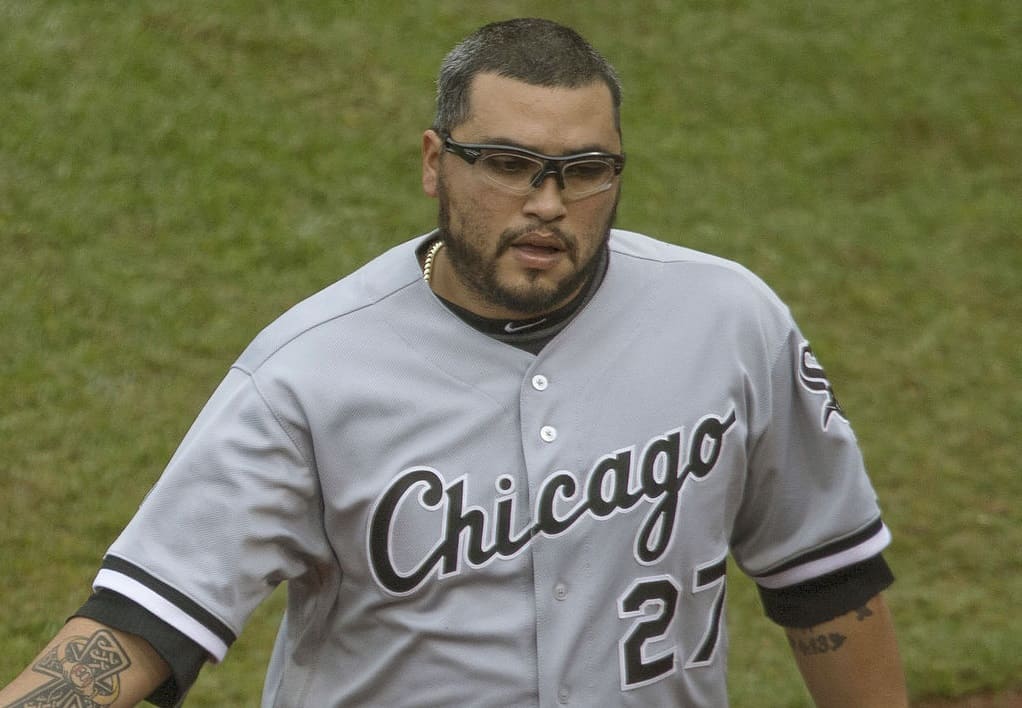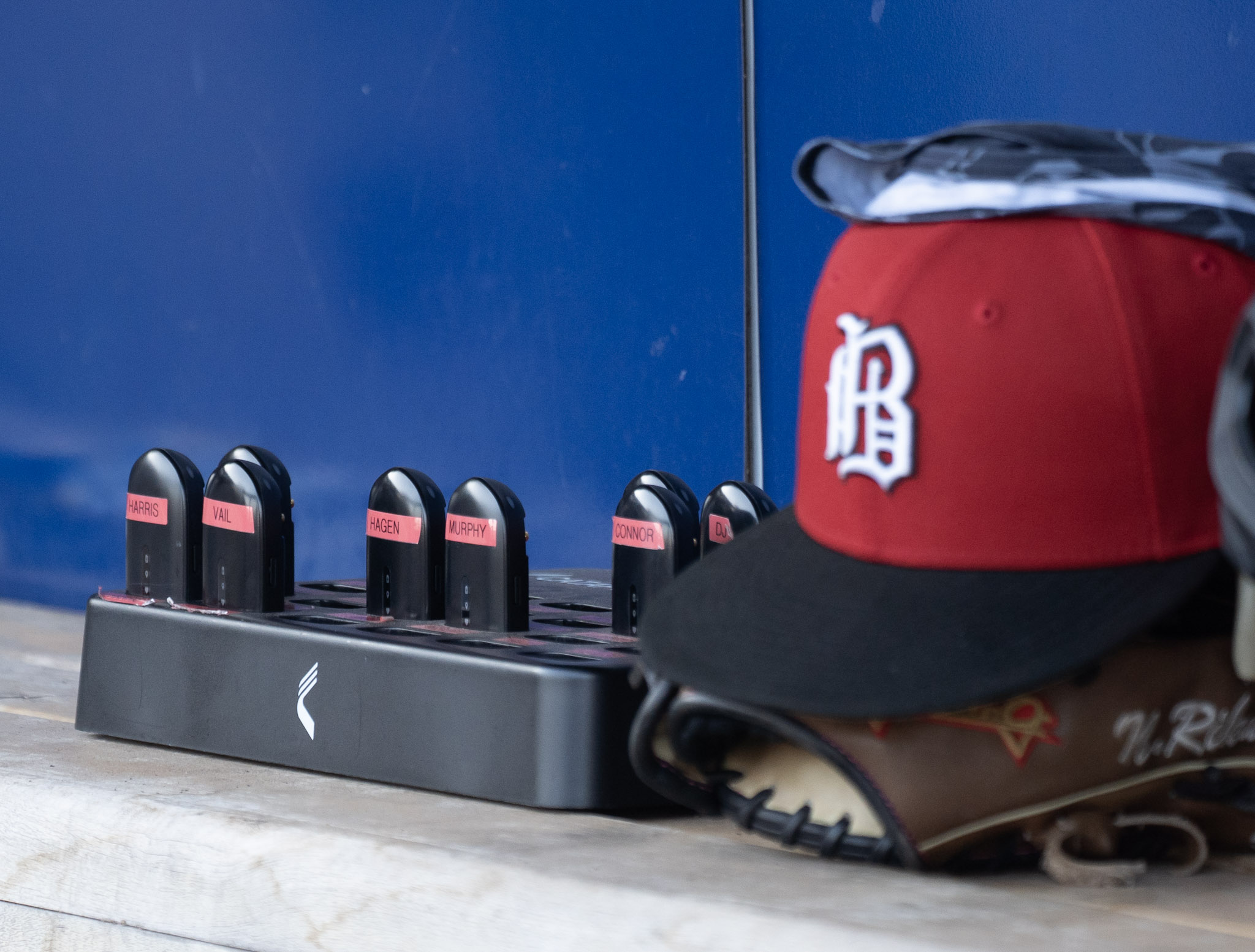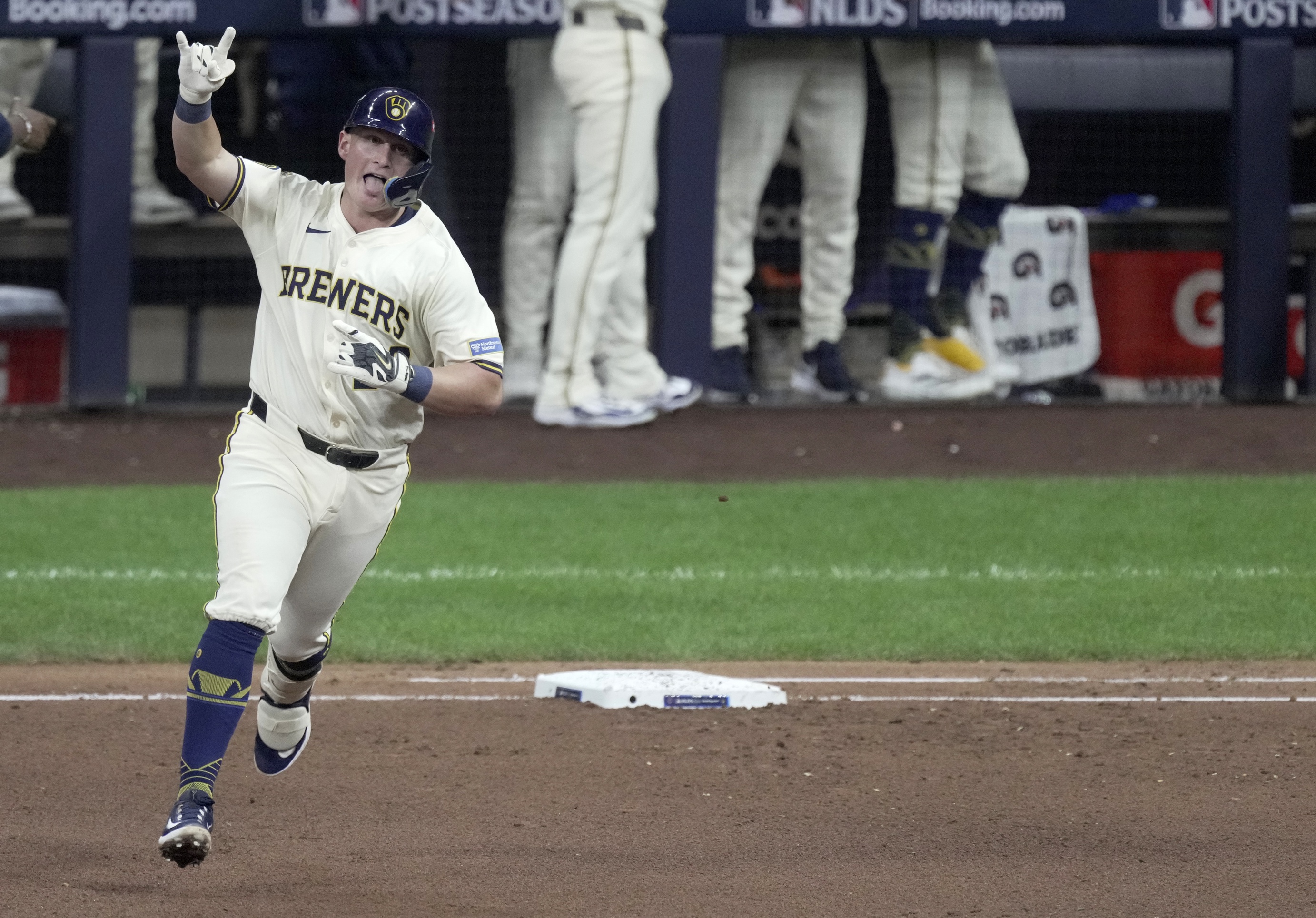First, a bit of unrelated news: The White Sox announced Dallas Keuchel this morning, filling the 40-man roster. A corresponding move will have to be made before Edwin Encarnación is official.
The contract differs a little from the original reporting. It's indeed for three years and $55.5 million, and he'll make an even $18 million per over those three years. However, the option is a club option for $20 million, not a vesting one, with a $1.5 million buyout if the White Sox decline to exercise it.
From the press release:
“We viewed Dallas as one of the premier free agent pitchers available this winter and so are thrilled to add him to this team and to our starting rotation,” said Rick Hahn, White Sox senior Vice President/general manager. “Dallas is a great competitor who we foresee throwing valuable innings in meaningful games for us over the next several years and leading our entire pitching staff through his example day in and day out.”
* * * * * * * * *
When mulling over the Most Forgettable White Sox of the 2010s, I debated whether that word could be stretched to include the ambitious sense of the term. Some fans, be they casual, late-arriving or maybe living off the grid for a year, might not have been aware that a certain underperforming player ever wore a White Sox uniform, and don't we wish we were them?
But no, there seemed to be a clear line between forgettable and regrettable, and this team comprises the latter.
With the Most Forgettable and Most Regrettable teams stacked up against Josh's All-Decade Team, the negatives are leading the positives 2-1. I'll even the ledger before the year and decade come to a close.
Catcher: Dioner Navarro
- Year: 2016
- Line: .210/.267/.339 over 85 games
It's well-worn territory that the White Sox briefly had a perfectly adequate catching platoon with Tyler Flowers and Alex Avila. Then they non-tendered Flowers to sign Navarro. Trading framing for Navarro's kind of offense was a terrible idea from the start, but one of his better seasons might've led to an interesting philosophical discussion. Instead, Navarro ended up hitting worse than Flowers, too, making the whole thing moot (.210/.267/.339).
Honorable mention: Welington Castillo. It wasn't a bad attempt to solve the catching problem at the onset, but his positive receiving year with Baltimore turned out to be an aberration, and he ended up earning the White Sox's first in-season MLB substance suspension.
First base: Adam LaRoche
- Years: 2015-16
- Line: .207/.293/.350, -0.8 WAR over 127 games
Having just weathered the Adam Dunn experience, the White Sox rushed right back into locking their DH up with Washington's former first basemen, and he proved to be an even worse idea. He was just as hard to watch at the plate, and making matters worse, his insistence on making his son part of the clubhouse, and the #FaithAndFamilyFirst firestorm that developed after he quit in protest, made headlines around the globe and set the tone for a disastrous last season of the first rebuild.
Honorable mention: Yonder Alonso, who hit worse than LaRoche, but owned a greater sense of awareness about his circumstances.
Second base: Gordon Beckham
- Years: 2009-2015
- Line: .242/.304/.370, 7.4 WAR over 839 G
Beckham delivered his only 2 WAR season in the previous decade. From 2010 to 2015, he was a below-average player who still played over 100 games every year, and perhaps a Beckham-less infield makes it easier to give Marcus Semien a shot. He did deliver Yency Almonte in a trade, which turned into Tommy Kahnle ... before it turned into Blake Rutherford, resetting the circus of value.
Honorable mention: Brett Lawrie, who was a perfectly adequate veteran plug-in until orthotics ruined his career. Emphasis mine, because it doesn't seem so simple.
Third base: Jeff Keppinger
- Years: 2013-14
- Line: .253/.283/.317, -1.9 WAR over 117 G
Keppinger joined the Sox to be a stopgap solution at third base, but he came to Chicago with a shoulder injury, failed to draw a walk over his first 141 plate appearances, and things never got better. The White Sox were so disenchanted with Keppinger that they cut him in the middle of his comeback attempt despite being owed $8.5 million over the final two years of his deal. He then lived out a midlife crisis on social media that ended with a racist tweet and a lamer excuse.
Honorable mention: Mark Teahen, whose acquisition would've been a decent, harmless idea had the White Sox not immediately extended him.
Shortstop: Ray Olmedo
- Year: 2012
- Line: .244/.244/.293, -0.1 WAR over 20 games.
Olmedo hadn't appeared in an MLB game since 2007 before the White Sox came calling. They opened up the utility infielder spot when they traded Eduardo Escobar to the Twins for Francisco Liriano, and Olmedo proceeded to pack a lot of damage into 20 games. One game in particular stands out: When Robin Ventura benched Alexei Ramirez for showing up late, Olmedo batted second, committed an error, failed to run out a bunt attempt, then struck out to end the game (because he was batting second). He's not forgettable to me because he scored on the Misfit Grand Slam.
Left field: Kosuke Fukudome
- Year: 2012
- Line: .171/.294/.195, -0.2 WAR over 24 G.
I almost put Fukudome on the Most Forgettable team over Lastings Milledge, but Fukudome actually signed a major league contract, albeit for just $1 million. Nobody had a good time, and the White Sox ended up designating him for assignment because they liked Jordan Danks more.
Center field: Jacob May
- Year: 2017
- Line: .056/.150/.056, -0.6 WAR over 42 PA.
May's 2017 season was a lot like Daniel Palka's 2019, except May had no other MLB success to point to as indicative of terrible luck. He just couldn't hack it. He started his career going 0-for-26 before delivering a pinch-hit single, after which he let out an anguished scream.
He notched just one more hit before the White Sox demoted him in favor of Adam Engel, and May set the bar so low that Engel's been allowed to accrue 1,047 plate appearances despite a 63 OPS+.
Right field: Jon Jay
- Year: 2019
- Line: .267/.311/.315, -0.8 WAR over 47 games.
Once the White Sox stopped short of signing Manny Machado, Jay was going to be seen as a vestigial organ. He lived down to that billing, missing most of the season with a vague hip injury, then missing whatever speed and power he had left when he finally showed up.
Designated hitter: Mark Kotsay
- Year: 2009-10
- Line: .252/.318/.391, -0.7 WAR over 147 games
I originally put Adam Dunn down, and maybe he should be since his historically awful season was at the center of so much strife in 2011. That said, Dunn might not even be part of White Sox plans if the White Sox didn't dismiss Jim Thome and entrust the spot to Kotsay in 2010. The Sox then set the Peter Principle into action, as Kotsay went from being a decent bench bat to an awful primary DH (.239/.306/.376), while Thome helped save Minnesota's season after Justin Morneau went down.
Honorable mention: Dunn hit .159 over 496 plate appearances.
Starting pitcher: Jeff Samardzija
- Year: 2015
- Line: 11-13, 4.96 ERA over 214 IP, 0.3 WAR
You're probably thinking James Shields, but thanks to Semien's MVP finish and Chris Bassitt's successful rebound from Tommy John surgery, the Samardzija trade is even more difficult to rationalize. The White Sox traded four talents of note for one year of Samardzija, who was never going to sign an extension despite a hometown connection due to what he perceived his role to be for the union. The White Sox unveiled the "Shark Cage" promotion before he started first game (Opening Day, another weird thing), and Hawk Harrelson deemed him a "Captain of Attitude" for a team that didn't go anywhere. Then Samardzija himself went elsewhere.
Honorable mention: Shields. Yes, he cost the White Sox a future star in Fernando Tatis Jr., but his third and final season in a White Sox uniform was more valuable than Samardzija's only one.
Relief pitcher: Kelvin Herrera
- Year: 2019-present
- Line: 6.14 ERA over 57 G, -0.4 WAR
Herrera has one more guaranteed year to salvage his tenure in Chicago, but the first year saw the White Sox pay him $8.5 million for a glorified rehab stint. His ERA rose above 6.00 on May 25, and it stayed there over his final 36 appearances on the season. That doesn't even include the 12 inherited runners he allowed to score, which is a remarkable number since he only had 19 of them all year.
Honorable mention: Scott Downs, who I once called Pajama Jeans for Men.






